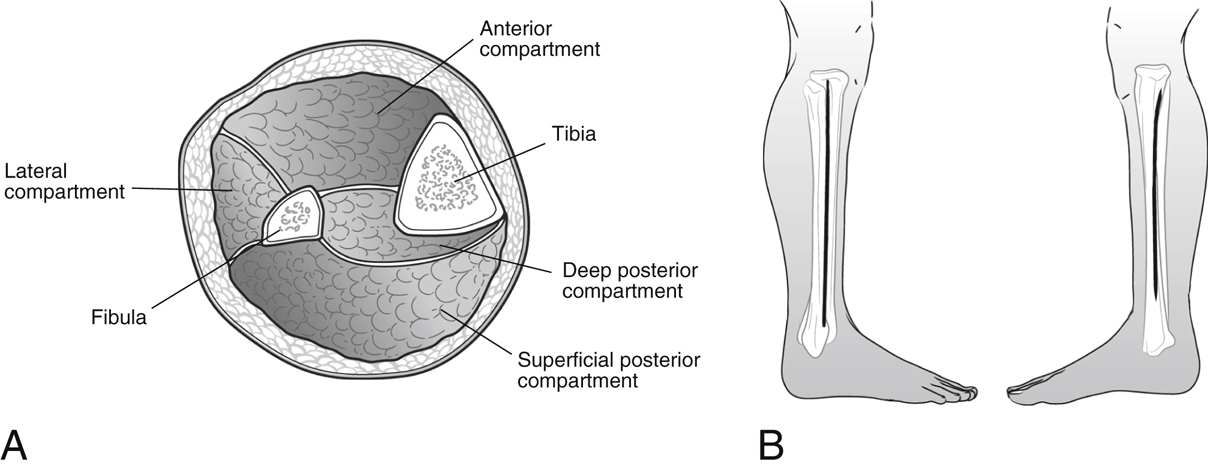Fasciotomy for Compartment Syndrome of the Leg
Introduction
Compartment syndrome arises from pressure within an osseofascial compartment high enough to compromise microvascular blood flow to tissue
If uncorrected, tissue necrosis occurs within a few hours
Several etiologies exist, most commonly trauma
Cycle of tissue trauma, inflammatory response, outpouring of fluid from capillaries and cells occurs
Results in compromised O2and CO2exchange
Tissue pressure within compartment and its relationship to the diastolic blood pressure (within 30 mm Hg) are determining factors for compartment syndrome
Commonly occurs in leg, but can affect the thigh, gluteal compartment, foot, forearm, hand, brachium, deltoid, and other compartments
Patient Selection
Earliest physical examination finding is pain on passive stretch of muscle in affected compartment
Affected compartments are tight and tender to palpation
Over time, pain increases and is less likely to be alleviated by narcotics
Numbness, paresthesias, diminished motor function, and pulselessness ensue; some myonecrosis has occurred if syndrome progresses to this point
Treatment is emergent fasciotomy of all affected compartments
Procedure
Surgical Technique

Figure 1Illustrations depict a two-incision fasciotomy for compartment syndrome of the leg. A, Cross-sectional view shows the anatomic muscle compartments of the leg. B, Location of incisions on the lateral and medial aspects of the leg.
Authors’ method is two-incision technique for release of all four osseofascial compartments in lower leg (Figure 1)
Stay updated, free articles. Join our Telegram channel

Full access? Get Clinical Tree


